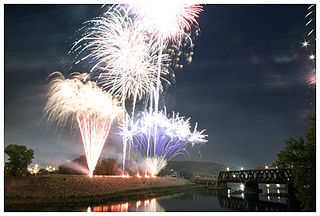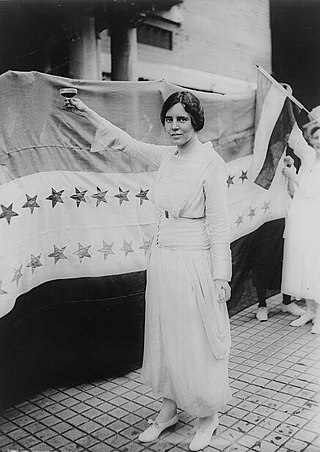Related Research Articles

New Haven is a city in New Haven County, Connecticut, United States. It is located on New Haven Harbor on the northern shore of Long Island Sound and is part of the New York City metropolitan area. With a population of 135,081 as determined by the 2020 U.S. census, New Haven is the third largest city in Connecticut after Bridgeport and Stamford, the largest city in the South Central Connecticut Planning Region, and the principal municipality of Greater New Haven, which had a total population of 864,835 in 2020. Prior to 1960, it was the county seat of New Haven County until the county governments were abolished that year.

Milford is a coastal city in New Haven County, Connecticut, United States, between New Haven and Bridgeport. The population was 50,558 at the 2020 United States Census. The city includes the village of Devon and the borough of Woodmont. Milford is part of the South Central Connecticut Planning Region and New York metropolitan area.

Derby is a city in New Haven County, Connecticut, United States, approximately 8 miles (13 km) west-northwest of New Haven. It is located in southwest Connecticut at the confluence of the Housatonic and Naugatuck rivers. It shares borders with the cities of Ansonia to the north and Shelton to the southwest, and the towns of Orange to the south, Seymour to the northwest, and Woodbridge to the east. The city is part of the Naugatuck Valley Planning Region. The population was 12,325 at the 2020 census. It is the smallest city in Connecticut by area, at 5.3 square miles (14 km2).

Meriden is a city in New Haven County, Connecticut, United States, located halfway between the regional cities of New Haven and Hartford. The city is part of the South Central Connecticut Planning Region. In 2020, the population of the city was 60,850.

Orange is a town in New Haven County, Connecticut, United States. The town is part of the South Central Connecticut Planning Region. The population was 14,280 at the 2020 census. The town is governed by a Board of Selectmen.

New Haven Colony was an English colony from 1638 to 1664 that included settlements on the north shore of Long Island Sound, with outposts in modern-day New York, New Jersey, Pennsylvania, and Delaware. The colony joined Connecticut Colony in 1664.

Stratford is a town in Fairfield County, Connecticut, United States. It is situated on Long Island Sound at the mouth of the Housatonic River. The town is part of the Greater Bridgeport Planning Region, and the Bridgeport–Stamford–Norwalk Metropolitan Statistical Area. It was settled by Puritans in 1639.

Robert Treat was an English-born politician, military officer and colonial administrator who served as the governor of Connecticut from 1683 to 1687 and 1689 to 1698. In 1666, he co-founded the colonial settlement of Newark, New Jersey.

The Connecticut Colony, originally known as the Connecticut River Colony, was an English colony in New England which later became the state of Connecticut. It was organized on March 3, 1636 as a settlement for a Puritan congregation of settlers from the Massachusetts Bay Colony led by Thomas Hooker. The English would secure their control of the region in the Pequot War. Over the course of the colony's history it would absorb the neighboring New Haven and Saybrook colonies. The colony's founding document, the Fundamental Orders of Connecticut has been called the first written constitution of a democratic government, earning Connecticut the nickname "The Constitution State."
Wooster may refer to:

The Connecticut State Library is the state library for the U.S. state of Connecticut and is also an executive branch agency of the state. It is located in Hartford, Connecticut directly across the street from the Connecticut State Capitol. The State Library provides a variety of library, information, archival, public records, museum, and administrative services to the citizens of Connecticut, as well as the employees and officials of all three branches of state government. Students, researchers, public libraries and town governments throughout the state are also served by the State Library. In addition, the State Library directs a program of statewide library development and administers the Library Services Technology Act state grant. "The mission of the Connecticut State Library is to preserve and make accessible Connecticut's history and heritage and to advance the development of library services statewide."
William Leete was Governor of the Colony of New Haven from 1661 to 1665 and Governor of the Colony of Connecticut from 1676 to 1683.

David Torrance was a soldier, lawyer, politician, and chief justice of the Supreme Court in Connecticut.
John Brockett was born in England. He was one of the early British settlers in the area of New Haven, Connecticut, and later helped found the town of Wallingford which he represented in the Connecticut General Assembly.

The Connecticut Women's Hall of Fame (CWHF) recognizes women natives or residents of the U.S. state of Connecticut for their significant achievements or statewide contributions.
Matthew Canfield was a founding settler of Norwalk, Connecticut and Newark, New Jersey. He served as a deputy of the General Court of the Connecticut Colony representing Norwalk in the sessions of May 1654, May 1655, May 1656, May 1657, May 1658, May 1659, May 1660, May 1661, May and October 1662, October 1663, May and October 1664, May and October 1665, and May and October 1666.
Isaac Moore was a founding settler of Norwalk, Connecticut. He served as a deputy of the General Court of the Connecticut Colony from Norwalk in the October 1657 session.

Sidney Mason Stone was a prominent Connecticut architect and builder known for designs of churches, institutional buildings and residences. His creations incorporated Greek Revival, Romanesque, Gothic, Italianate and other styles popular in the 19th century. He served in several civic capacities in the city of New Haven and statewide and as mentor to Yale students prior to the establishment of that university's School of Architecture. He was the father of Harriet Mulford Stone, better known to readers of children's literature as Margaret Sidney, creator of the Five Little Peppers series.
Thomas Hanford was a founding settler of Norwalk, Connecticut. He was the first minister in Norwalk, and continued in charge of the settlement's church for forty-one years, until his death in 1693. In addition to his spiritual leadership, he also served as the civic leader and school teacher of the settlement.
Rev. James Fitch was instrumental in the founding of Norwich and Lebanon, Connecticut. He was the first minister ordained in Saybrook, Connecticut and played a key role in negotiations with the Mohegans during King Philip's War.
References
- ↑ "Derby, CT Hall of Fame". electronicvalley.org. Retrieved 2021-03-17.
- ↑ "Derby, CT Hall of Fame". electronicvalley.org. Retrieved 2021-03-18.
- Derby website (2003-10-21). "Tombstone of Edward Wooster". Derby History Quiz Archives. Archived from the original on 2007-09-27.
This section needs additional citations for verification .(August 2007) |